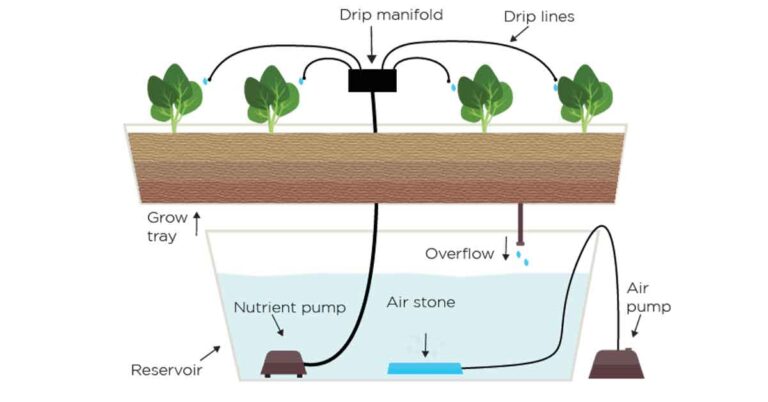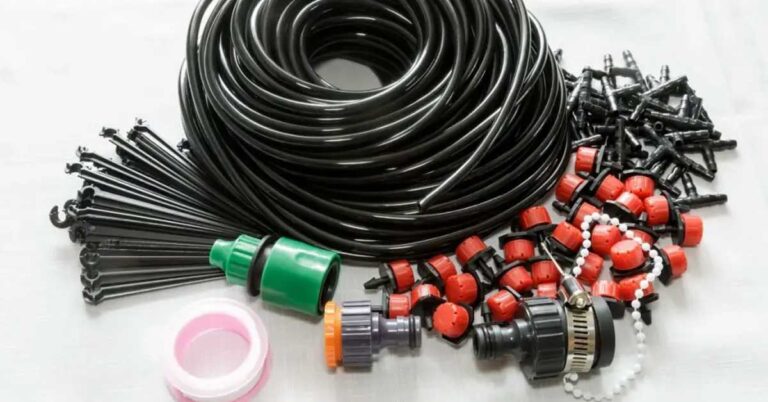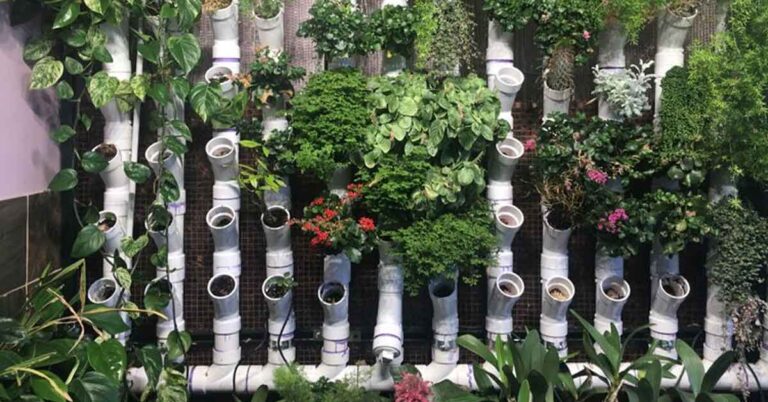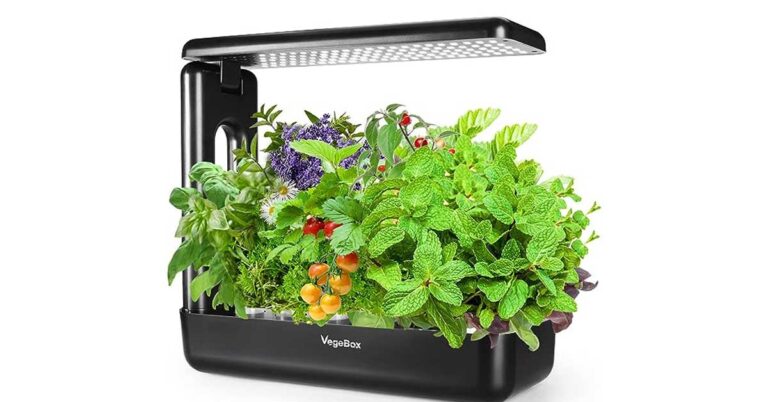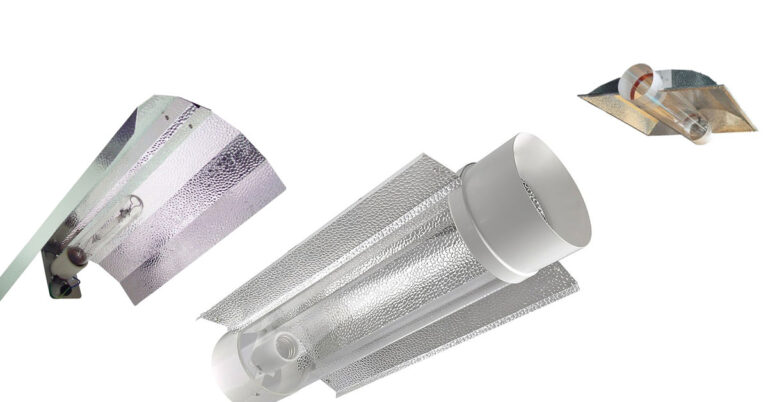Hydroponic Tomato Leaves Curling Down
Hydroponic farming has revolutionized agriculture, allowing us to grow plants such as tomatoes in controlled environments without soil. However, like any farming method, it has its own set of complications. A common challenge faced by many hydroponic farmers is the phenomenon of “hydroponic tomato leaves curling down.”
This issue, characterized by the downward curling or wilting of tomato leaves, can indicate various underlying problems that may impact the health and productivity of your tomato plants.
Hydroponic tomato plants can exhibit leaf curling, a common issue that indicates underlying growth challenges. Understanding why hydroponic tomato leaves curl down is crucial for maintaining plant health and optimizing yields. This phenomenon can stem from various factors, including environmental stressors like improper nutrient levels, temperature fluctuations or inadequate humidity control within the hydroponic system.
Leaf curling typically occurs when tomato plants face nutrient deficiencies, particularly of essential minerals like calcium or magnesium. In hydroponics, where plants rely solely on nutrient solutions, maintaining a balanced nutrient profile is paramount. Insufficient nutrient uptake can lead to physiological disorders, manifesting as curled or distorted leaves.
Effective management of hydroponic environments is essential to mitigate leaf curling issues in tomatoes. By addressing nutrient imbalances, ensuring optimal environmental conditions and adopting proper cultivation practices, growers can proactively support healthy tomato growth. Identifying the specific causes behind leaf curling enables targeted solutions that promote robust plant development and maximize crop productivity.
Understanding the Basics of Hydroponic Tomato Plants
Hydroponic tomato plants are grown in nutrient-rich solutions, bypassing the need for soil. The roots of these plants are submerged in a water-based solution which is fortified with the necessary nutrients for optimum growth.
There are multiple methods of hydroponic cultivation including deep water culture, nutrient film technique, and aeroponics, each with its unique advantages and requirements.
The essence of hydroponics lies in the precise control of environmental factors such as temperature, humidity, light, and nutrient concentration.
This precision often results in higher yields and faster growth compared to traditional soil-based cultivation.
However, this also means that any imbalance in these factors can lead to issues like leaf curling. Understanding these basics is crucial for troubleshooting and maintaining a successful hydroponic tomato farm.
Common Causes of Curling Tomato Leaves
- Nutrient Imbalance: One of the most common reasons for leaf curling in hydroponic tomato plants is an imbalance of nutrients in the water solution. Too much or too little of certain nutrients can lead to the leaves curling downwards.
- Water Temperature: The temperature of the water in your hydroponic system can significantly affect the health of your tomato plants. If the water is too cold, it can lead to the leaves curling. The optimal temperature for hydroponic solutions is typically around 65-80 degrees Fahrenheit.
- Lighting Issues: While tomato plants need plenty of light to grow, too much light or exposure to high-intensity light can cause the leaves to curl. It’s important to provide your plants with a balanced light cycle.
- Pests and Diseases: In some cases, leaf curling can be a sign of pests or diseases affecting your tomato plants. Regular inspection of your plants can help to detect any potential issues early.
- Environmental Stress: Factors such as high temperatures, low humidity, and inadequate ventilation can cause stress to the plants, leading to leaf curling.
Hydroponic Tomato Leaves Curling Down
Tomato plants grown in hydroponic systems may experience leaf curling, a concern that warrants attention to maintain plant vitality and productivity. Understanding why hydroponic tomato leaves curl down is crucial for effective management and optimal crop health.
Several factors can contribute to this issue, including nutrient deficiencies, environmental stressors or physiological disorders within the hydroponic setup.
Identifying Causes of Leaf Curling
Leaf curling in hydroponic tomatoes often results from inadequate nutrient uptake, specifically deficiencies in essential minerals such as calcium or magnesium. These nutrients are crucial for proper plant development and can lead to curling or distortion of leaves when lacking. Environmental factors like temperature fluctuations, humidity levels and light exposure can also influence leaf health and contribute to curling issues.
Addressing Leaf Curling in Hydroponic Tomatoes
To address leaf curling effectively, growers should first diagnose the specific cause affecting their hydroponic tomato plants. Implementing balanced nutrient solutions tailored to the plant’s needs, maintaining stable environmental conditions and ensuring proper ventilation and air circulation can help alleviate leaf curling symptoms.
Regular monitoring of plant health and timely adjustments to nutrient levels and environmental parameters are essential practices to support healthy tomato growth and minimize leaf curling in hydroponic systems.
Identifying Nutrient Deficiency in Hydroponic Tomatoes
Nutrient deficiencies in hydroponic tomatoes manifest in various ways, and understanding these signs is crucial for maintaining the health of your plants.
Here are some common symptoms and their related nutrient deficiencies:
- Nitrogen Deficiency: This is often indicated by yellowing or paleness of the lower leaves. As the deficiency progresses, the plants may become stunted, and the leaves can turn brown and die.
- Phosphorus Deficiency: Symptoms include dull, dark-green leaves and stunted growth. Later stages might show purple discoloration on the undersides of the leaves.
- Potassium Deficiency: Symptoms start with yellowing at the leaf edges and tips, which can turn brown as the deficiency worsens. Additionally, fruits may ripen unevenly or show dark concentric rings.
- Calcium Deficiency: This deficiency often shows as curled leaf tips and blossom end rot in fruits, which appears as dark, sunken spots at the fruit’s base.
- Magnesium Deficiency: Symptoms include yellow or white patches between leaf veins, which eventually become reddish-brown.
- Iron Deficiency: This is characterized by yellowing of the young leaves while the veins remain green, a condition known as chlorosis.
Tips for Preventing Curling Leaves in Hydroponic Tomatoes
Preventing curling leaves in hydroponic tomatoes can be achieved through careful monitoring and control of your hydroponic system. Here are some tips:
- Balancing Nutrient Solution: Regularly check and adjust the nutrient concentration in your water solution. Use a reliable nutrient solution designed for hydroponic tomatoes, and follow the manufacturer’s instructions regarding the proper dosage.
- Maintaining Optimal Water Temperature: Keep the water temperature within the ideal range of 65-80 degrees Fahrenheit. Water chillers or heaters can be used to regulate the temperature.
- Proper Lighting: Ensure your plants have balanced light exposure. High-intensity light can cause leaf curling, so it may be necessary to adjust the distance between the light source and the plants or use a timer to control light exposure.
- Pest and Disease Control: Regularly inspect your plants for pests and diseases. Use pest control measures and disease-resistant varieties to reduce the risk of infestation.
- Environmental Control: Maintain consistent environmental conditions in your growing area. Avoid high temperatures, low humidity, and poor ventilation, as these can lead to environmental stress and subsequent leaf curling.
- Proper pH Level: In a hydroponic system, the optimal pH level is between 5.5 and 6.5. Regularly test and adjust the pH level of the solution to maintain this range.
Solutions for Treating Curled Tomato Leaves
When curling of tomato leaves is observed, it is essential to address the root cause. Here are some common solutions depending on the likely problem:
- Correcting Nutrient Imbalance: If a nutrient imbalance is suspected, adjusting the nutrient solution to the correct concentration can often solve the problem. If needed, a complete solution change may be necessary. You can also consider using a different nutrient mix designed specifically for tomatoes.
- Fixing Water Temperature: If the water temperature is too low or too high, adjusting it to the optimal range of 65-80 degrees Fahrenheit can help. Use an aquarium heater or chiller to help maintain the ideal temperature.
- Adjusting Light Exposure: If curling leaves are a result of light burn, reducing the exposure can help. This might involve moving the light source further away from the plants or reducing the number of hours the plants are exposed to light each day.
- Pest and Disease Treatment: If pests or diseases are causing the issue, it might be necessary to remove infected plants from the system to prevent further spread. Using organic or chemical pest control measures can also be beneficial.
- Improving Environmental Factors: If environmental stress is causing the curling, making adjustments to the temperature, humidity, and ventilation in your growing area can help. Using fans, humidifiers, or heaters can help create a more suitable environment for your plants.
- Buffering pH Levels: If pH imbalance is the issue, use pH buffers to adjust the solution to the optimal range.
Conclusion
Addressing the issue of hydroponic tomato leaves curling down is essential for maintaining a healthy and productive growing environment. Identifying the root causes whether they are nutrient imbalances, environmental stressors or disease, allows growers to implement effective solutions tailored to their specific situation. Regular monitoring and adjustments are key to preventing and correcting these issues, ensuring that tomato plants remain robust and fruitful.
By focusing on balanced nutrient solutions, maintaining optimal environmental conditions and adopting best practices in hydroponic management, growers can mitigate the risk of leaf curling and other common plant issues. This proactive approach not only enhances plant health but also contributes to higher yields and better quality tomatoes.
Ultimately, successful hydroponic tomato cultivation hinges on the ability to recognize and address leaf curling symptoms promptly. With a well informed strategy and diligent care, growers can foster thriving tomato plants, achieving a bountiful harvest and reaping the full benefits of their hydroponic system.


